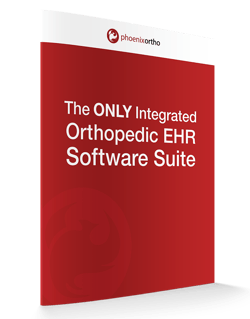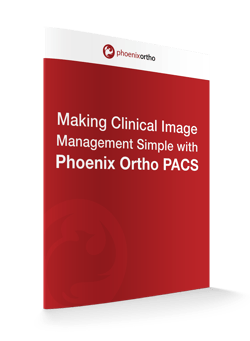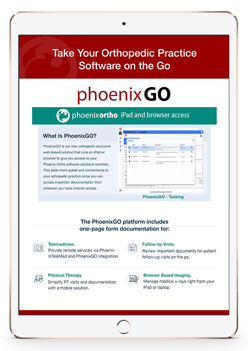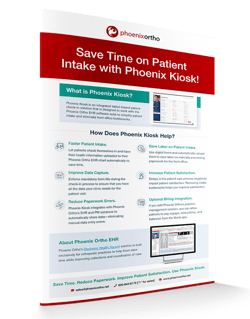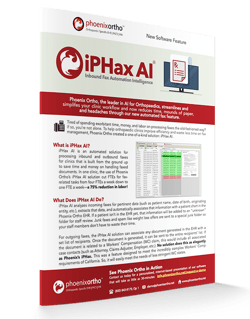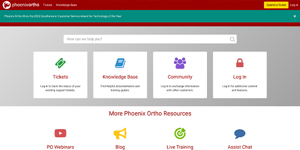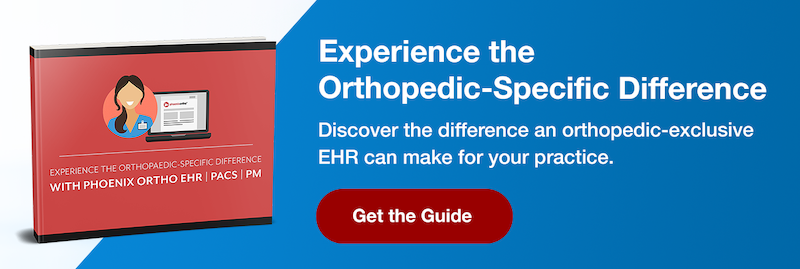Patient charts—sometimes referred to as medical charts—are essential documents for any patient visit in any medical field. An accurate and comprehensive patient chart gives orthopedic surgeons important insights into a patient’s condition and medical history. These insights can be crucial for making sound decisions in managing the patient’s health.
This is why patient chart management is crucial. However, is it possible to improve chart management so that it’s faster, easier, and more accurate? Could orthopedic doctors use technology to make patient charts better and improve the patient experience?
The short answer is: “Yes!” Here’s an explanation of how using an Electronic Health Record (EHR) system can improve patient chart management:
What Does a Patient Chart Need to Have?
One of the most basic aspects of making patient charts better is ensuring that they are as accurate and comprehensive as possible. As noted in Fundamentals of Medical Record Documentation:
“failure to document relevant data is itself considered a significant breach of and deviation from the standard of care… The patient’s record provides the only enduring version of the care as it evolves over time and a reference work of value in emergency care, research, and quality assurance.”
In other words, an incomplete patient record can be potentially hazardous. Complete medical records help to avoid risk—for both the practice and the patient. So, it’s important for a patient record to have data such as:
- Basic Patient Identity Information. This includes things like the patient’s name, date of birth, file number, and other information that can be used to identify the patient. This can help to prevent entry errors where data is added to the wrong patient’s chart.
- Patient Consent Forms. A list of permissions signed by the patient for procedures, tests, chart access, and other necessary items for effective patient care.
- Orders History. A list of medication/treatment orders given by the physician, nurse, assistant, or other qualified care providers.
- Patient Medical History and Physical. A review of the patient’s medical history and any physical examinations they may have on their record.
- Test Record. A list of the diagnostic evaluations/tests a patient has completed—along with reports or summaries of test results.
- Treatment Records. A list of all treatments provided (such as arm/leg casts, rehabilitative therapy sessions, etc.).
- Medication Record. A list of each medication provided to the patient, complete with notes on dosages and the prescription schedule.
- Care Plans. Notes on treatment goals and plans for future care.
- Progress Notes. Documentation that tracks the patient’s status over repeated medical interactions.
- Insurance Information. A list of coverage and benefits provided by the patient’s insurance company/payer organization.
- Discharge Notes. A list of final instructions for the patient to follow as well as final reports from the care provider/team made before the chart is closed and the patient discharged.
- Date and Time Information for Every Interaction. In any patient record, each interaction needs to be documented with date and time information so they can be accurately sorted into a coherent timeline.
Whenever possible, the information in each of these fields should be as objective as possible to accurately reflect the care provided and avoid ambiguity. As noted by the Encyclopedia of Surgery, “It is important that the information in the chart be clear and concise, so that those utilizing the record can easily access accurate information.”
Bloated chart notes that include too much speculation over objective data can be confusing for other care providers who work with the same patient.
Additionally, it’s important to verify that, within the orthopedic clinic, every physician, assistant, and staff member uses the same definitions for any abbreviations or acronyms used in the practice or avoid their use entirely. For example, Duquesne University notes that “The use of abbreviations in patient charting has been found to lead to medical error.”
Some abbreviations may be applicable to several different conditions, medications, or treatments, so their use can cause confusion if the practice doesn’t have a single, agreed-upon definition for each abbreviation or acronym used. Also, if data or reports from the patient chart have to be sent to a different practice (such as if the clinic is acting as a third-party specialist for a hospital and the referring physician needs details about the care plan/treatment provided), then the use of abbreviations and acronyms may be confusing for the other care provider.
These are just a few of the basics that you should find in any patient chart example.
Benefits of an EHR for Patient Charts
So, where do EHRs figure into patient chart management? In essence, Electronic Health Records systems are all about helping improve patient charting.
1. Making Chart Note Organization Easier
With an EHR, orthopedic doctors, assistants, and staff can all make chart notes with automatic date and time stamps that make it easy to organize every note from every interaction by chronological order.
2. Saving Time on Patient Chart Management
EHRs can also help to save a lot of time on patient chart management. For example, Phoenix Ortho’s EHR features rapid charting capabilities that proactively learn a practitioner’s preferences to streamline future chart input on a per-provider basis. Over time, the software “learns” which notes a physician frequently makes and prioritizes those so the doctor can fill out common forms and notes faster.
A patient-facing data entry solution, like Phoenix Kiosk, can take this a step further by having patients update their own medical histories and other information from a tablet before ever meeting their physician.
3. Improving Patient Chart Completeness
An incomplete note in the patient chart can be a major problem for billing, proving compliance with medical industry standards, and for providing other practice staff with all of the information they need about a given patient.
With an EHR, orthopedic clinics can simplify the process of making patient notes to make it easier to capture them. This helps to ensure that a complete note is made in the EHR.
4. Improving Prescription Drug Management
Manually writing out prescriptions for major medications can easily lead to mistakes—especially when prescribers are in a hurry and using shorthand notes or have less than perfect handwriting. EHRs with prescription management solutions help to ensure consistent and simple drug prescription workflows.
With an integrated e-prescription solution, doctors can write scripts for patients from their computer and even check patient drug histories in the patient chart of the EHR quickly. This helps to both simplify prescription management and save time.
Some EHRs (like Phoenix Ortho) even have integrations with mobile prescription applications (like iPrescribe) to allow doctors to take their prescription management on the go.
5. Increasing Consistency for Billing to Improve Collections at the Point of Care
As mentioned earlier, an incomplete patient chart could negatively impact the ability to collect from payer organizations (such as HMOs, health insurance companies, and employers). With a system to manage Evaluation and Management (E & M) billing codes that prevents undercoding and overcoding by checking the patient notes in the EHR, orthopedic practices can maximize their revenue while minimizing audit risks and errors.
Need to Simplify Your Patient Chart Management?
For any medical practice, having a solution that simplifies patient chart management can be an enormous time-saver. However, finding the right solution can be difficult. How do you sort the top-quality EHRs from the ones that will waste your time and make life more difficult than it needs to be?
One way is to start with an orthopedic-exclusive EHR provider—one that only works with orthopedic practices and optimizes every process, form, and update to meet the needs of orthopedists.
Phoenix Ortho is an orthopedic-exclusive platform built solely for the needs of orthopedic practices. With us, you can rest easy knowing that all of our time and resources are being spent on ways to make your orthopedic practice operate more effectively and efficiently so you can reclaim your day.
Ready to simplify your orthopedic patient chart management? Reach out to Phoenix Ortho today to get started!
Schedule a 1:1
Get in touch with Phoenix Ortho to learn more about how you can save time, money, and mouse clicks with an orthopedic-specific EHR.





